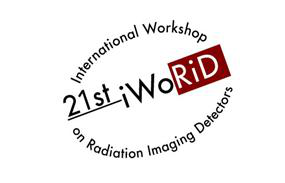Speaker
Description
In the classic understanding the achievable volume resolution in computed tomography depends on a number of system parameters, i.e. detector pitch, focal spot size and geometric magnification.
However, at second glance, this fundamental assumption turns out to be rather inaccurate. Given, for example, a detector with a box-like point function (PSF), with an edge response much narrower than its pixel pitch, such as some hybrid-pixel detectors [1], the target resolution can be enhanced dramatically by spatial sub-sampling [2]. This is inherently the case when performing tomography with dense angular sampling.
A different limitation of the target resolution arises from the smearing by the finite size of the X-ray source's focal spot. Opposite to smearing by a broad detector PSF, this effect cannot be efficiently counteracted by application of a projection based deconvolution. This is particularly true in case of large variation of the effective magnification within the sample, which is the case when large geometrical magnification is employed.
A possible remedy of this effect is the accurate implementation of the smearing process into the forward model of an iterative volume reconstruction algorithm.
The current contribution demonstrates that significant improvement of the volume resolution can be achieved by combination of such a routine with direct converting hybrid-pixel detectors. The implementation of the reconstruction routine allows for arbitrary shape of the focal spot, entailing interesting application fields for example where modern high performance metal-jet micro-focus X-ray tubes with asymmetric focal spot are employed.
[1] D. Maneuski et al, 2015 JINST 10 P03018
[2] J. Dudak et al, 2017 JINST12 C01060

